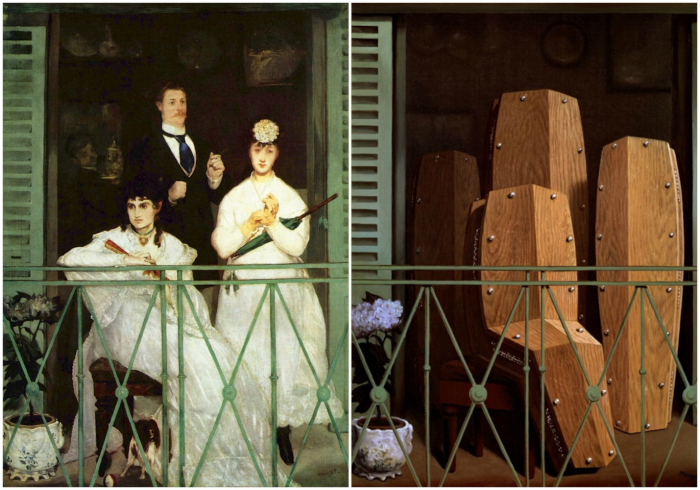It is inspired by the Italian title of a movie by Luchino Visconti, this journey among family paintings by Salone del Lutto.
The ideal interiors are those of a Victorian-style house in 00001, Cemetery Lane. A hall leading to a wide living room with animal trophies on the walls and wicker chairs with a wide back. A giant butler wanders among the furniture. They are all there, mother, father, grandma, uncle, cousin and grandchildren: a boy and a girl. There are also animals – not exactly “pets” – such as a lion, a gorilla and an octopus, although the most welcome guest is Thing, which lives inside a nice casket in the living room.
We are talking about the Addams Family, created by Charles Addams in the 1930s, which made its first appearance in a series of cartoons on The New Yorker and became famous thanks to the TV series of the 1960s, which was interrupted within just two years from the first episode, making the family members immortal or, better said, a cult.
Another family, another portrait
It is a 1950 painting: Perspective II: Le Balcon de Manet, by René Magritte. It refers to Edouard Manet’s painting of the same name: the setting – the balcony, the shutters and the flower pots – is exactly the same but the nice à la page middle-class group (family?) originally painted is replaced by a disquieting group of wooden coffins. They reproduce the same postures and characters’ angles as in the impressionist painting, recreating in a surreal and macabre way the original scene, which was peaceful and elegant.
Sabotaging reality in his own polite but inexorable manner, Magritte makes us aware of death, not only that of the people in the painting, but of an entire era, of all that is gone and cannot come back. All that has simply come to an end.
To cut a long story short, the two images share the same destiny and – melting together – they create our ideal family portrait. But, looking at it in all its detail, on the background we can see a door that opens to a long corridor with two little girls in the middle, two sisters holding hands whose eyes seem to say: “Come play with us.” “Living families are all alike; every dead family is dead in its own way” (L. Tolstoj, more or less).


